
Torres del Paine National Park: Nature's Masterpiece in Patagonia
Discover the breathtaking landscapes of Torres del Paine National Park in Chile, a UNESCO Biosphere Reserve offering unparalleled hiking, wildlife, and natural beauty.
Located in the heart of Chilean Patagonia, Torres del Paine National Park is a stunning natural wonder. This UNESCO Biosphere Reserve is renowned for its dramatic landscapes, including towering peaks, turquoise lakes, and sprawling glaciers. Visitors can explore a variety of terrains, from dense forests to arid steppes, each offering its own unique beauty. The park is a paradise for outdoor enthusiasts. Hiking trails such as the famous W Trek and the O Circuit take you through some of the most breathtaking scenery in the world. Along the way, you may encounter diverse wildlife, including guanacos, foxes, and even the elusive puma. Bird watchers will also be delighted with the variety of species, including the majestic Andean condor. Beyond its natural splendor, Torres del Paine offers a range of activities for all levels of adventurers. Kayaking, horseback riding, and boat tours to the Grey Glacier are just a few of the options. The park's well-maintained infrastructure ensures that visitors can enjoy these experiences safely and comfortably. Whether you're seeking thrilling adventures or serene landscapes, Torres del Paine provides an unforgettable journey into the wild.
Local tips in Torres del Paine National Park
- Best time to visit is from October to April, when the weather is milder and the days are longer.
- Book accommodations and tours well in advance, especially during peak season.
- Pack layers of clothing to adapt to the park's unpredictable weather conditions.
- Carry enough cash, as ATMs and card facilities are limited within the park.
- Respect the park's rules and regulations to preserve its pristine environment.
Torres del Paine National Park: Nature's Masterpiece in Patagonia
Located in the heart of Chilean Patagonia, Torres del Paine National Park is a stunning natural wonder. This UNESCO Biosphere Reserve is renowned for its dramatic landscapes, including towering peaks, turquoise lakes, and sprawling glaciers. Visitors can explore a variety of terrains, from dense forests to arid steppes, each offering its own unique beauty. The park is a paradise for outdoor enthusiasts. Hiking trails such as the famous W Trek and the O Circuit take you through some of the most breathtaking scenery in the world. Along the way, you may encounter diverse wildlife, including guanacos, foxes, and even the elusive puma. Bird watchers will also be delighted with the variety of species, including the majestic Andean condor. Beyond its natural splendor, Torres del Paine offers a range of activities for all levels of adventurers. Kayaking, horseback riding, and boat tours to the Grey Glacier are just a few of the options. The park's well-maintained infrastructure ensures that visitors can enjoy these experiences safely and comfortably. Whether you're seeking thrilling adventures or serene landscapes, Torres del Paine provides an unforgettable journey into the wild.
When is the best time to go to Torres del Paine National Park?
Iconic landmarks you can’t miss
Mirador Base Las Torres
Explore the breathtaking views at Mirador Base Las Torres in Torres del Paine National Park, a must-visit for every nature lover and adventure seeker.

Torres del Paine Welcome Center
Discover the Torres del Paine Welcome Center, your ultimate guide to exploring Chile's breathtaking national park and its stunning natural wonders.
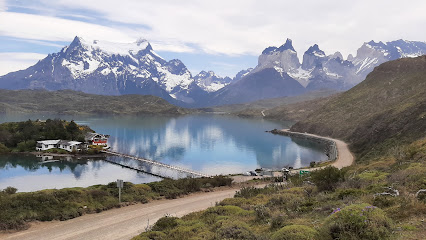
Cascada Rio Paine
Discover the breathtaking beauty of Cascada Rio Paine in Torres del Paine National Park, a stunning waterfall surrounded by majestic landscapes and diverse wildlife.
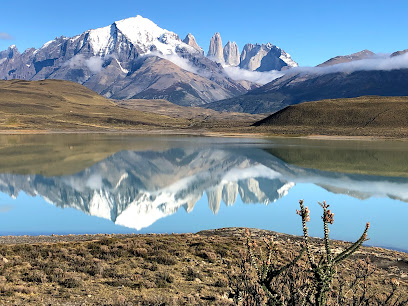
Acceso serrano parque torres del paine
Explore Torres del Paine National Park, a breathtaking UNESCO Biosphere Reserve featuring iconic peaks, stunning lakes, and diverse wildlife in Chile's Patagonia.
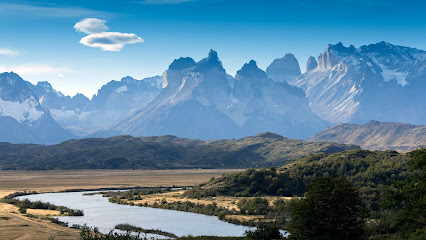
Hosteria Pehoe
Discover the beauty of Torres del Paine at Hosteria Pehoe, where stunning views and cozy accommodations await.

Cordillera del Paine
Explore the breathtaking Cordillera del Paine, a UNESCO Biosphere Reserve with stunning landscapes and diverse wildlife in Chile's Torres del Paine National Park.
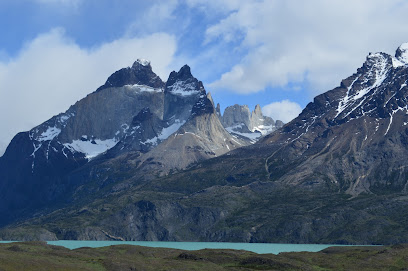
Tierra Patagonia Hotel & Spa
Discover the perfect blend of luxury and nature at Tierra Patagonia Hotel & Spa, the gateway to the stunning landscapes of Torres del Paine National Park.

Administrative headquarters Torres Del Paine National Park
Experience the breathtaking beauty of Torres Del Paine National Park, where granite peaks meet turquoise lakes in the heart of Chilean Patagonia.
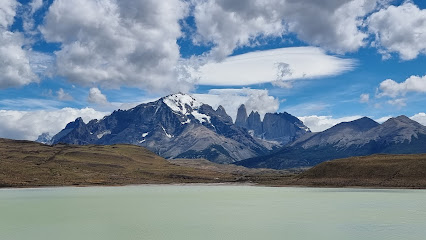
Lake Pehoé
Experience the breathtaking beauty of Lake Pehoé in Torres del Paine National Park, a stunning glacial lake surrounded by majestic mountains.
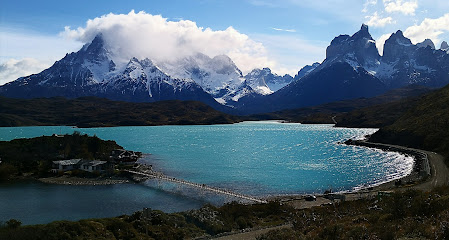
Cerro Paine Grande
Explore the breathtaking Cerro Paine Grande in Torres del Paine National Park for an unforgettable adventure amidst nature's grandeur.
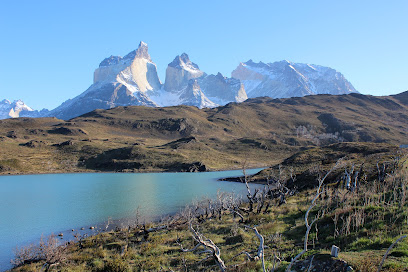
Mirador Torres Del Paine
Discover the stunning vistas at Mirador Torres Del Paine, a must-visit destination in Chile's breathtaking Torres del Paine National Park.
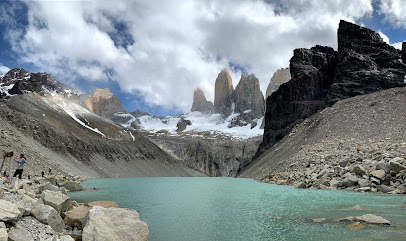
Torres de Paine trail head
Explore the breathtaking landscapes of Torres de Paine, a hiker's paradise filled with stunning peaks, vibrant lakes, and diverse wildlife.
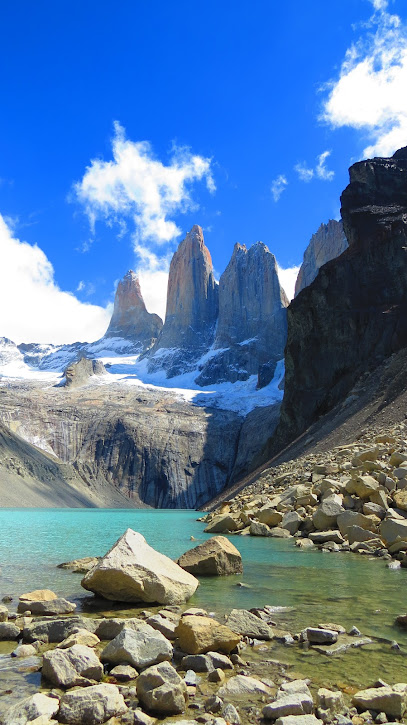
Mirador Valle del Francés
Experience the breathtaking vistas of Mirador Valle del Francés in Torres del Paine, where stunning peaks and glaciers create a captivating landscape.
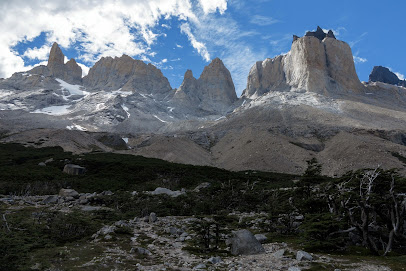
Torre del Paine Norte
Explore the stunning Torre del Paine Norte in Chile, a breathtaking natural wonder with dramatic landscapes, diverse wildlife, and unforgettable hiking adventures.
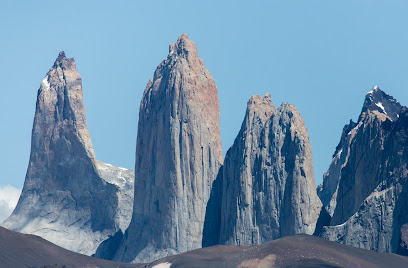
Unmissable attractions to see
Parque Nacional Radal Siete Tazas
Explore the breathtaking beauty of Parque Nacional Radal Siete Tazas, a paradise for nature lovers and adventure seekers in Chile's Maule region.
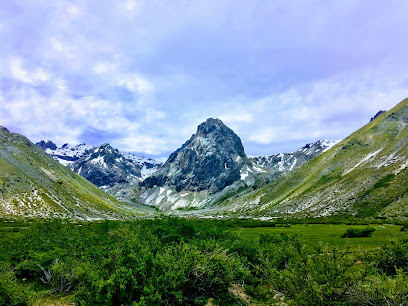
Mylodon Cave Natural Monument
Discover the ancient wonders and breathtaking landscapes at Mylodon Cave Natural Monument, a must-visit national park in southern Chile.
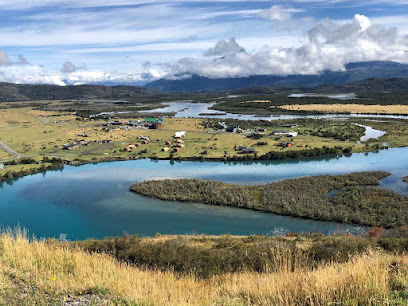
Plaza de Armas Arturo Prat
Explore Plaza de Armas Arturo Prat, the vibrant heart of Puerto Natales, where local culture meets stunning Patagonian scenery in a picturesque park setting.
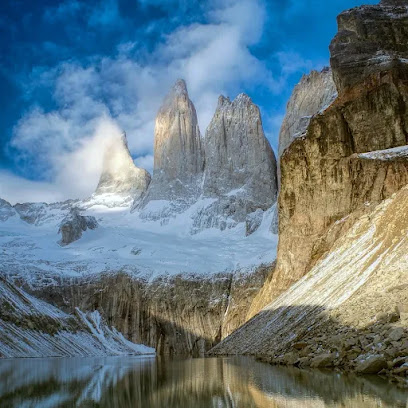
La Mano
Explore La Mano in Puerto Natales, a stunning sculpture symbolizing the connection between humanity and nature amidst breathtaking Patagonian scenery.

Mirador Base Las Torres
Experience the awe-inspiring beauty of Torres del Paine at the Mirador Base Las Torres, a top destination for hikers and nature lovers in Patagonia.

Mirador Base Las Torres
Experience the stunning beauty of Torres del Paine at Mirador Base Las Torres, where majestic granite towers meet breathtaking Patagonian landscapes.
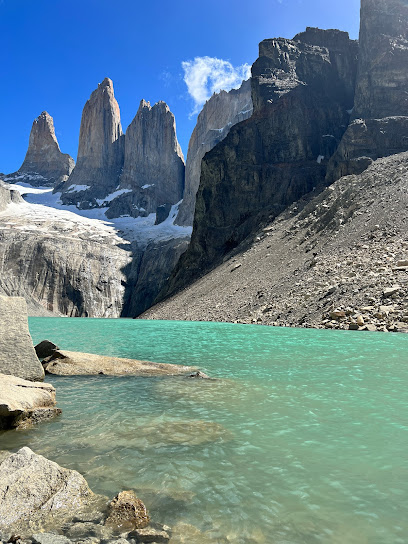
Guarderia Grey
Explore the breathtaking landscapes of Guarderia Grey in Torres del Paine National Park, a must-visit destination for nature lovers and adventure seekers.

Guarderia Grey
Explore the stunning beauty of Guarderia Grey in Torres del Paine National Park, where breathtaking landscapes and diverse wildlife await.
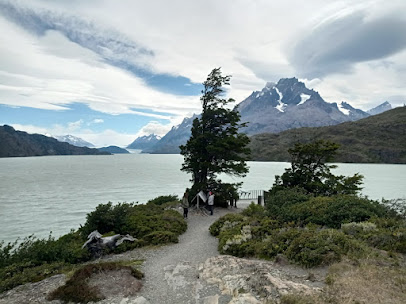
Torres del Paine Welcome Center
Explore the breathtaking landscapes of Torres del Paine at the Welcome Center, your gateway to adventure in Chilean Patagonia.

Muelle Historico
Experience the historic beauty of Muelle Historico, a picturesque waterfront in Puerto Natales, Chile, where stunning landscapes meet vibrant local culture.

Torres del Paine Welcome Center
Explore the Torres del Paine Welcome Center, your essential guide to adventure in Chile's stunning national park with breathtaking views and invaluable resources.
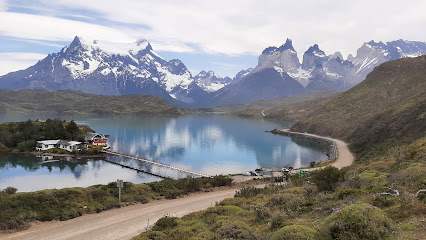
Cascada Rio Paine
Discover the breathtaking landscapes, diverse wildlife, and adventure trails of Torres de Paine National Park in the heart of Chilean Patagonia.
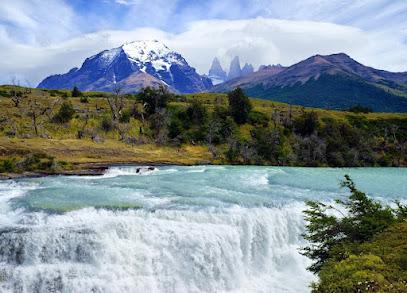
Mirador Nordenskjöld Lake
Explore the stunning vistas of Mirador Nordenskjöld Lake in Torres del Paine National Park, where breathtaking landscapes await every traveler.

Mirador Nordenskjöld Lake
Experience the breathtaking beauty of Mirador Nordenskjöld Lake in Torres del Paine National Park, a must-visit for nature lovers and adventure seekers.
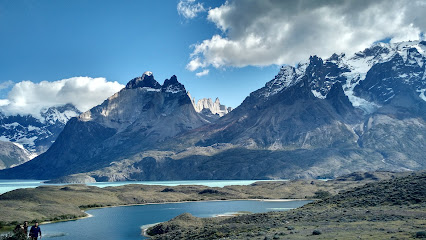
Cascada Rio Paine
Experience the breathtaking beauty of Cascada Rio Paine in Torres del Paine National Park, a must-visit destination for nature lovers and photographers in Chile.
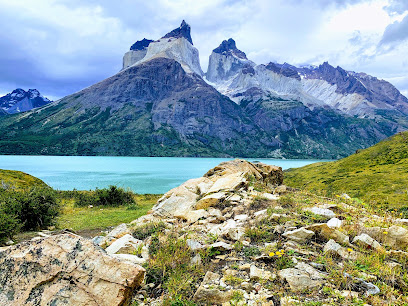
Essential places to dine
Hosteria Pehoe
Discover the breathtaking beauty of Patagonia at Hosteria Pehoe in Torres del Paine National Park - your perfect retreat amidst nature's wonders.

Restaurant Pehoe Barbecue
Experience authentic Chilean barbecue surrounded by breathtaking landscapes at Restaurant Pehoe Barbecue in Torres del Paine National Park.
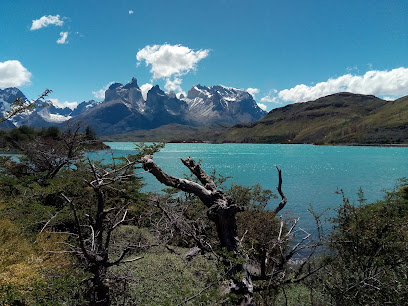
El Ovejero
Experience authentic Patagonian cuisine at El Ovejero, nestled in the heart of Torres del Paine National Park.
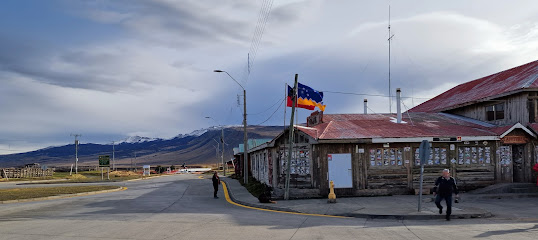
Refugio laguna amarga
Experience unparalleled natural beauty and cozy comfort at Refugio Laguna Amarga in Torres del Paine National Park.
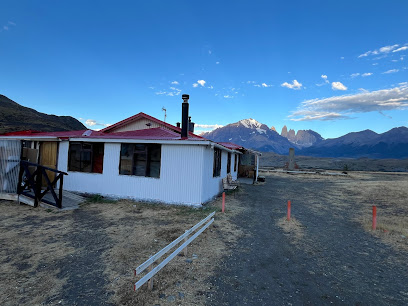
Hostería El Pionero
Experience comfort and local charm at Hostería El Pionero near Torres del Paine – your gateway to stunning landscapes and unforgettable adventures.

Rio Pingo
Experience authentic Patagonian cuisine at Rio Pingo, nestled in Torres del Paine National Park's breathtaking landscapes.
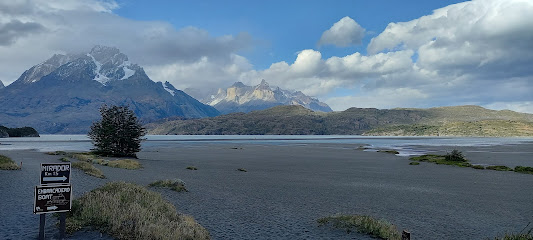
Las Dos Rosas de Paine
Discover authentic Chilean cuisine at Las Dos Rosas de Paine - where traditional flavors meet warm hospitality in the heart of Paine.
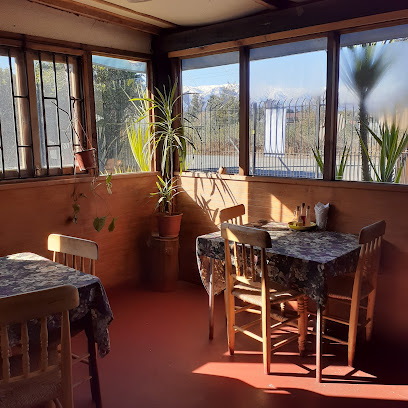
Markets, malls and hidden boutiques
Torres del Paine National Park
Discover the breathtaking beauty of Torres del Paine National Park, a must-visit for nature lovers and adventure seekers in Chilean Patagonia.

Mirador Base Las Torres
Experience the breathtaking beauty of Mirador Base Las Torres, the iconic viewpoint in Torres del Paine National Park, showcasing nature's grandeur.
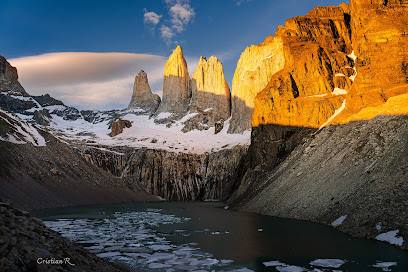
Torres del Paine Welcome Center
Experience the beauty of Torres del Paine at the Welcome Center, your starting point for adventure in Chile's stunning national park.
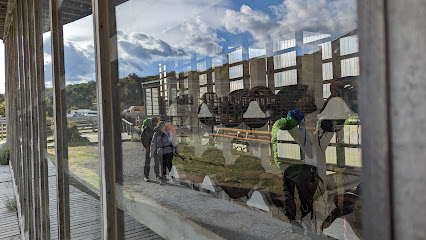
Cascada Rio Paine
Discover the breathtaking beauty of Cascada Rio Paine, a stunning waterfall in Torres del Paine, surrounded by pristine nature and dramatic landscapes.
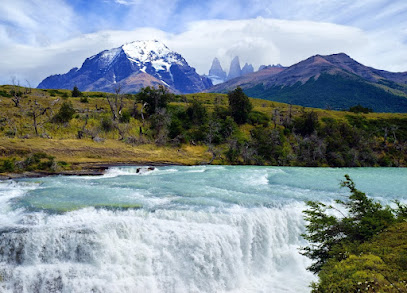
Salto Grande Lookout
Discover the stunning vistas of Salto Grande Lookout, a premier destination in Torres del Paine National Park, where nature's beauty unfolds at every glance.
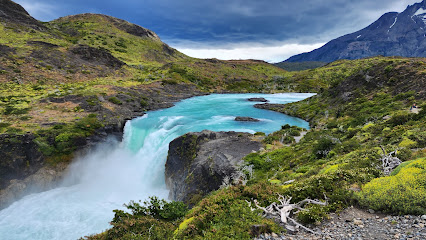
Hosteria Pehoe
Experience the stunning landscapes of Torres del Paine from the comfort of Hosteria Pehoe, where adventure meets tranquility in Patagonia.

Holaste! Specialty Coffee
Discover the heart of Natales at Holaste! Specialty Coffee, where artisanal brews meet a welcoming atmosphere for coffee and dog lovers alike.
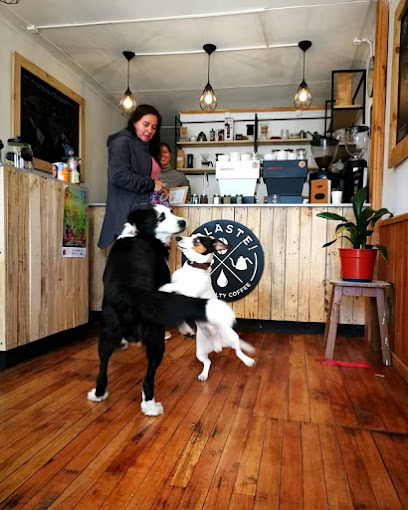
Administrative headquarters Torres Del Paine National Park
Experience the breathtaking beauty of Torres Del Paine National Park, a national treasure in Chile known for its dramatic landscapes and diverse wildlife.
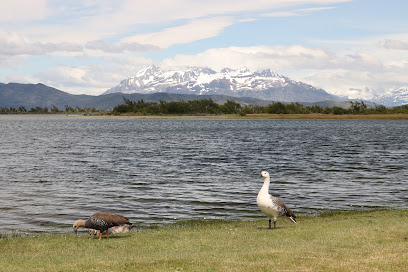
Mirador Cóndor
Experience the breathtaking vistas of Torres del Paine at Mirador Cóndor, a top hiking destination in Chile's stunning Patagonia region.
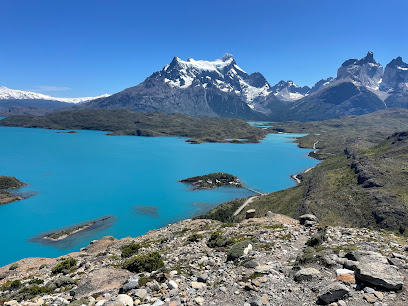
Ludopía Board Game Café
Discover the vibrant Ludopía Board Game Café in Puerto Natales, where delightful coffee meets an extensive selection of board games for all ages.

Frutos Secos
Explore the diverse offerings at Frutos Secos, Puerto Natales' premier supermarket for local and international delicacies.
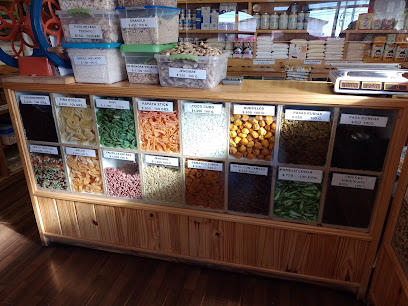
One Aco Outdoorshop
Discover high-quality outdoor clothing and gear at One Aco Outdoorshop in Puerto Natales, your gateway to Patagonia's breathtaking adventures.
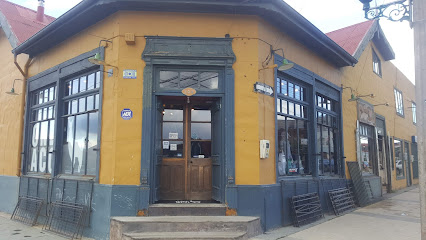
Adventure Cactus Coffee
Experience the best of Puerto Natales at Adventure Cactus Coffee, where every sip and bite takes you on a delicious journey through Patagonia's flavors.
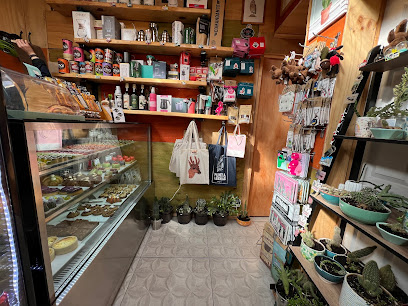
Hostería El Pionero
Discover the beauty of Torres del Paine at Hostería El Pionero, where comfort meets nature's splendor in Chilean Patagonia.

Volkanica Outdoors - Puerto Natales
Discover top-quality outdoor sports gear and expert advice at Volkanica Outdoors, your adventure partner in Puerto Natales, Chile.
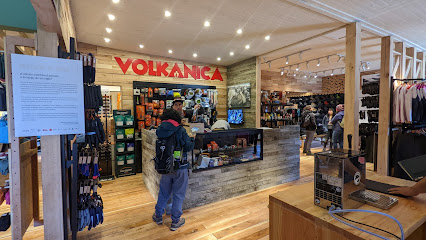
Essential bars & hidden hideouts
Hotel Lago Grey - Torres del Paine Chile
Discover the tranquility of Hotel Lago Grey, a serene hotel in Torres del Paine National Park offering breathtaking views and unforgettable experiences.
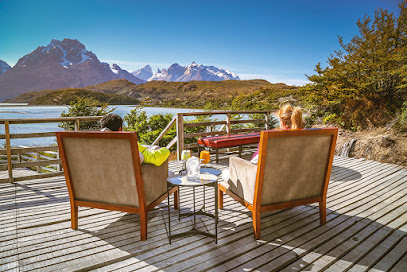
Pampa Restobar
Experience the authentic taste of Chile at Pampa Restobar in Puerto Natales, where grilled delights and local flavors await.
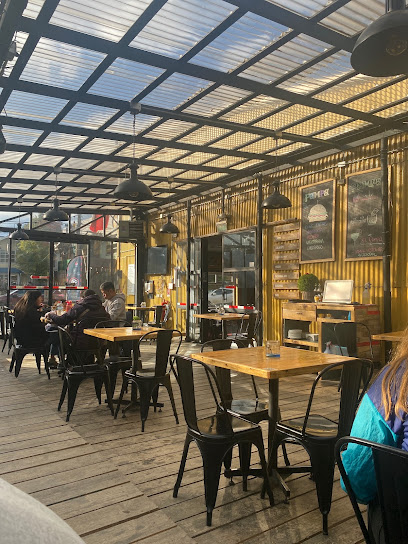
Hosteria Pehoe
Discover the enchanting beauty of Patagonia at Hosteria Pehoe, nestled in Torres del Paine National Park, offering stunning views and cozy accommodations.

Refugio & Camping Vertice Paine Grande
Experience the breathtaking beauty of Torres del Paine at Refugio & Camping Vertice Paine Grande, your perfect base for adventure.
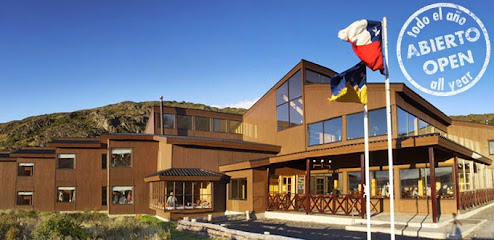
The Singing Lamb - Bar
Experience the vibrant culture of Puerto Natales at The Singing Lamb, a must-visit bar and restaurant offering delightful cuisine and a lively atmosphere.

El Puesto Restobar
Experience the vibrant atmosphere and local flavors at El Puesto Restobar in Puerto Natales, the perfect spot to unwind after your Patagonian adventures.
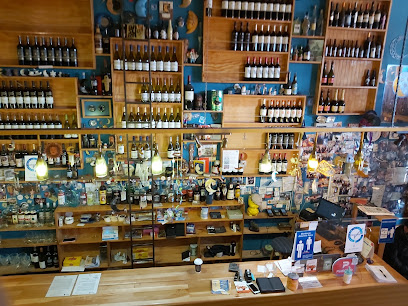
Restaurant Pehoe Barbecue
Experience the authentic taste of Patagonia at Restaurant Pehoe Barbecue, surrounded by the stunning vistas of Torres del Paine National Park.

Wine & Market Patagonia
Experience the essence of Patagonia at Wine & Market, where local wines and gourmet delights await in a cozy setting.
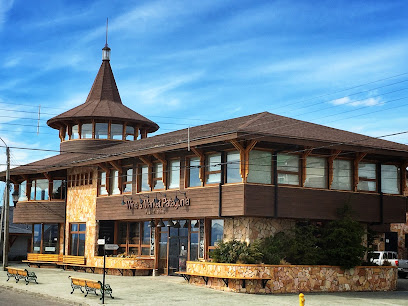
Pampa Lodge- Refugio- Quincho y Caballos
Discover the natural beauty of Torres de Paine at Pampa Lodge, where comfort meets adventure in the heart of Patagonia.

El Ovejero
Discover El Ovejero, a remarkable restaurant in Torres del Paine serving authentic Patagonian cuisine amid stunning natural landscapes.

Wild Restobar & Cervecería
Discover the flavors of Patagonia at Wild Restobar & Cervecería, where local cuisine meets craft brewing in a cozy and inviting atmosphere.
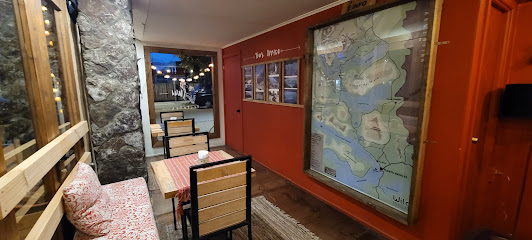
Hostería El Pionero
Experience the charm of Hostería El Pionero, where delicious local cuisine meets the stunning beauty of Torres del Paine.

Rio Pingo
Discover the delicious flavors of Patagonia at Rio Pingo in Torres del Paine National Park, a culinary experience surrounded by breathtaking landscapes.
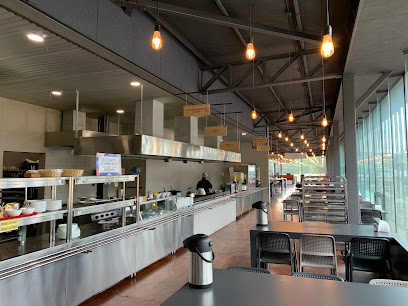
Ice Bar Natales
Discover the breathtaking Ice Bar Natales, where cocktails are crafted in a stunning ice environment that showcases the beauty of Patagonia.

Restaurante Pehoe
Experience the flavors of Patagonia at Restaurante Pehoe, a dining gem nestled in Torres del Paine National Park with breathtaking views.
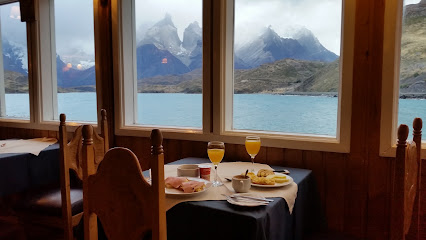
Local Phrases about Torres del Paine National Park
-
- HelloHola
[o-la] - GoodbyeAdiós
[a-di-ós] - YesSí
[sí] - NoNo
[no] - Please/You're welcomePor favor/De nada
[por fa-vor/de na-da] - Thank youGracias
[gra-cias] - Excuse me/SorryPerdón
[per-dón] - How are you?¿Cómo estás?
[¿có-mo es-tás?] - Fine. And you?Bien. ¿Y tú?
[bien. ¿y tú?] - Do you speak English?¿Hablas inglés?
[¿ha-blas in-glés?] - I don't understandNo entiendo
[no en-tien-do]
- HelloHola
-
- I'd like to see the menu, pleaseQuisiera ver el menú, por favor
[ki-sie-ra ver el me-nú, por fa-vor] - I don't eat meatNo como carne
[no co-mo car-ne] - Cheers!¡Salud!
[¡sa-lud!] - I would like to pay, pleaseMe gustaría pagar, por favor
[me gus-ta-ría pa-gar, por fa-vor]
- I'd like to see the menu, pleaseQuisiera ver el menú, por favor
-
- Help!¡Ayuda!
[¡a-yu-da!] - Go away!¡Vete!
[¡ve-te!] - Call the Police!¡Llama a la policía!
[¡ya-ma a la po-li-cía!] - Call a doctor!¡Llama a un doctor!
[¡ya-ma a un doc-tor!] - I'm lostEstoy perdido
[es-toy per-di-do] - I'm illEstoy enfermo
[es-toy en-fer-mo]
- Help!¡Ayuda!
-
- I'd like to buy...Me gustaría comprar...
[me gus-ta-ría com-prar...] - I'm just lookingSolo estoy mirando
[so-lo es-toy mi-ran-do] - How much is it?¿Cuánto cuesta?
[¿cuan-to cues-ta?] - That's too expensiveEso es demasiado caro
[e-so es de-ma-sia-do ca-ro] - Can you lower the price?¿Puede bajar el precio?
[¿pue-de ba-jar el pre-cio?]
- I'd like to buy...Me gustaría comprar...
-
- What time is it?¿Qué hora es?
[¿qué ho-ra es?] - It's one o'clockEs la una
[es la u-na] - Half past (10)Las diez y media
[las diez y me-dia] - MorningMañana
[ma-ña-na] - AfternoonTarde
[tar-de] - EveningNoche
[no-che] - YesterdayAyer
[a-yer] - TodayHoy
[hoy] - TomorrowMañana
[ma-ña-na] - 1Uno
[u-no] - 2Dos
[dos] - 3Tres
[tres] - 4Cuatro
[cua-tro] - 5Cinco
[cin-co] - 6Seis
[seis] - 7Siete
[siete] - 8Ocho
[o-cho] - 9Nueve
[nue-ve] - 10Diez
[diez]
- What time is it?¿Qué hora es?
-
- Where's a/the...?¿Dónde está...?
[¿dón-de es-tá...?] - What's the address?¿Cuál es la dirección?
[¿cual es la di-rec-ción?] - Can you show me (on the map)?¿Puedes mostrarme (en el mapa)?
[¿pue-des mos-trar-me (en el ma-pa)?] - When's the next (bus)?¿Cuándo es el próximo (bus)?
[¿cuan-do es el pró-xi-mo (bus)?] - A ticket (to ....)Un boleto (a ....)
[un bo-le-to (a ....)]
- Where's a/the...?¿Dónde está...?
History of Torres del Paine National Park
-
Before the arrival of Europeans, the region now known as Torres del Paine National Park was inhabited by indigenous groups, primarily the Tehuelche people. These nomadic hunters and gatherers roamed the Patagonian plains, relying on guanacos and other wildlife for sustenance. Evidence of their presence can still be found in the form of rock art and archaeological sites scattered throughout the park.
-
The first European to document the area was the British naturalist George Chaworth Musters in the late 19th century. His accounts of the region provided a captivating glimpse into the rugged and remote beauty of Patagonia. However, it was the advent of the 20th century that brought more detailed exploration, notably by Swedish geologist Otto Nordenskjöld, who conducted scientific expeditions in the area and contributed significantly to the understanding of the park's geology and geography.
-
The name 'Torres del Paine' translates to 'Towers of Blue' in English, a reference to the iconic granite peaks that dominate the landscape. These majestic towers were named by Lady Florence Dixie, a British writer and adventurer, who visited the area in 1879 and was captivated by their striking appearance. Her travelogue, 'Across Patagonia,' helped to popularize the region among European audiences.
-
Torres del Paine National Park was officially established on May 13, 1959. Initially named 'Parque Nacional de Turismo Lago Grey,' the park's boundaries and name were later expanded to encompass a larger area and reflect its iconic features. The establishment of the park aimed to protect the unique ecosystems, diverse wildlife, and stunning landscapes from increasing human impact and exploitation.
-
In 1978, Torres del Paine National Park was designated as a UNESCO Biosphere Reserve in recognition of its exceptional natural beauty and ecological significance. This status emphasizes the importance of conservation efforts and sustainable tourism practices to preserve the park's pristine environment for future generations. The designation also highlights the park's role in scientific research and education.
-
Beyond its natural wonders, Torres del Paine holds cultural significance for the indigenous communities and local populations. The park is home to numerous sites of cultural heritage, including ancient burial grounds and sacred places revered by the Tehuelche people. Efforts are ongoing to document and preserve these cultural assets, ensuring that the rich history of the region is honored and maintained.
Torres del Paine National Park Essentials
-
Torres del Paine National Park is located in the southern region of Chile, in Patagonia. The nearest airport is Presidente Carlos Ibáñez del Campo International Airport (PUQ) in Punta Arenas, approximately 310 kilometers south of the park. From Punta Arenas, you can take a bus or rent a car to reach the park. The drive typically takes around 4-5 hours. Another option is to fly into El Calafate Airport (FTE) in Argentina and then take a bus or rent a car to cross the border into Chile. This route provides an opportunity to explore the nearby Los Glaciares National Park as well.
-
Once in the park, transportation options include shuttle buses, guided tours, and car rentals. Shuttle buses operate between major points of interest and trailheads, making it convenient for hikers. Guided tours are available for those who prefer a more structured visit, offering insights from knowledgeable guides. Renting a car provides the greatest flexibility, allowing you to explore at your own pace. However, be prepared for gravel roads and varying weather conditions.
-
The official currency in Chile is the Chilean Peso (CLP). Credit cards are widely accepted in hotels, restaurants, and shops within larger towns like Puerto Natales. However, it is advisable to carry cash for transactions within the park and smaller establishments. ATMs are available in Puerto Natales, but they are scarce within the park itself. It is recommended to withdraw sufficient cash before entering the park.
-
Torres del Paine National Park is generally safe for tourists, but it is important to take standard precautions. Avoid leaving valuables in plain sight in your vehicle and always lock your car. Stick to designated trails and inform park rangers about your hiking plans. Weather conditions can change rapidly, so be prepared with appropriate clothing and gear. While there are no specific high-crime areas targeting tourists, it is always best to stay vigilant and aware of your surroundings.
-
In case of an emergency, contact park rangers at the nearest ranger station. They are trained to handle various situations and can provide assistance. For medical emergencies, the nearest hospital is in Puerto Natales. It is advisable to have travel insurance that covers medical emergencies and evacuation. Carry a first-aid kit and familiarize yourself with basic first-aid procedures. The emergency number in Chile is 131 for medical assistance, 132 for fire, and 133 for police.
-
Fashion: Do wear layers and waterproof clothing to adapt to changing weather conditions. Avoid wearing jeans, as they can become uncomfortable when wet. Religion: Do respect local customs and traditions, especially in nearby towns. There are no specific religious sites within the park, but general respect is appreciated. Public Transport: Do be courteous to fellow passengers on shuttle buses. Don't be late for scheduled departures, as services run on tight schedules. Greetings: Do greet people with a friendly 'Hola' or 'Buenos días.' A smile goes a long way in establishing positive interactions. Eating & Drinking: Do try local Patagonian cuisine, such as lamb and king crab. Don't leave litter behind; always dispose of waste properly to protect the environment.
-
To experience Torres del Paine like a local, consider visiting during the shoulder seasons (spring and autumn) when the park is less crowded. Engage with park rangers and local guides to learn about the history and ecology of the area. Try to catch a sunrise or sunset at the iconic Torres del Paine peaks for breathtaking views. For a unique experience, take a boat tour to Grey Glacier or hike the lesser-known trails for a more secluded adventure.
Trending Landmarks in Torres del Paine National Park
-
Mirador Base Las Torres
-
Torres del Paine Welcome Center
-
Cascada Rio Paine
-
Acceso serrano parque torres del paine
-
Hosteria Pehoe
-
Cordillera del Paine
-
Tierra Patagonia Hotel & Spa
-
Administrative headquarters Torres Del Paine National Park
-
Lake Pehoé
-
Cerro Paine Grande
-
Mirador Torres Del Paine
-
Torres de Paine trail head
-
Mirador Valle del Francés
-
Torre del Paine Norte
Nearby Cities to Torres del Paine National Park
-
Things To Do in Puerto Natales
-
Things To Do in Punta Arenas
-
Things To Do in Ushuaia
-
Things To Do in Puerto Varas
-
Things To Do in Bariloche
-
Things To Do in San Carlos de Bariloche
-
Things To Do in Osorno
-
Things To Do in Valdivia
-
Things To Do in Pucon
-
Things To Do in Temuco
-
Things To Do in Concepción
-
Things To Do in Curicó
-
Things To Do in San Rafael
-
Things To Do in Rancagua
-
Things To Do in Mar del Plata













